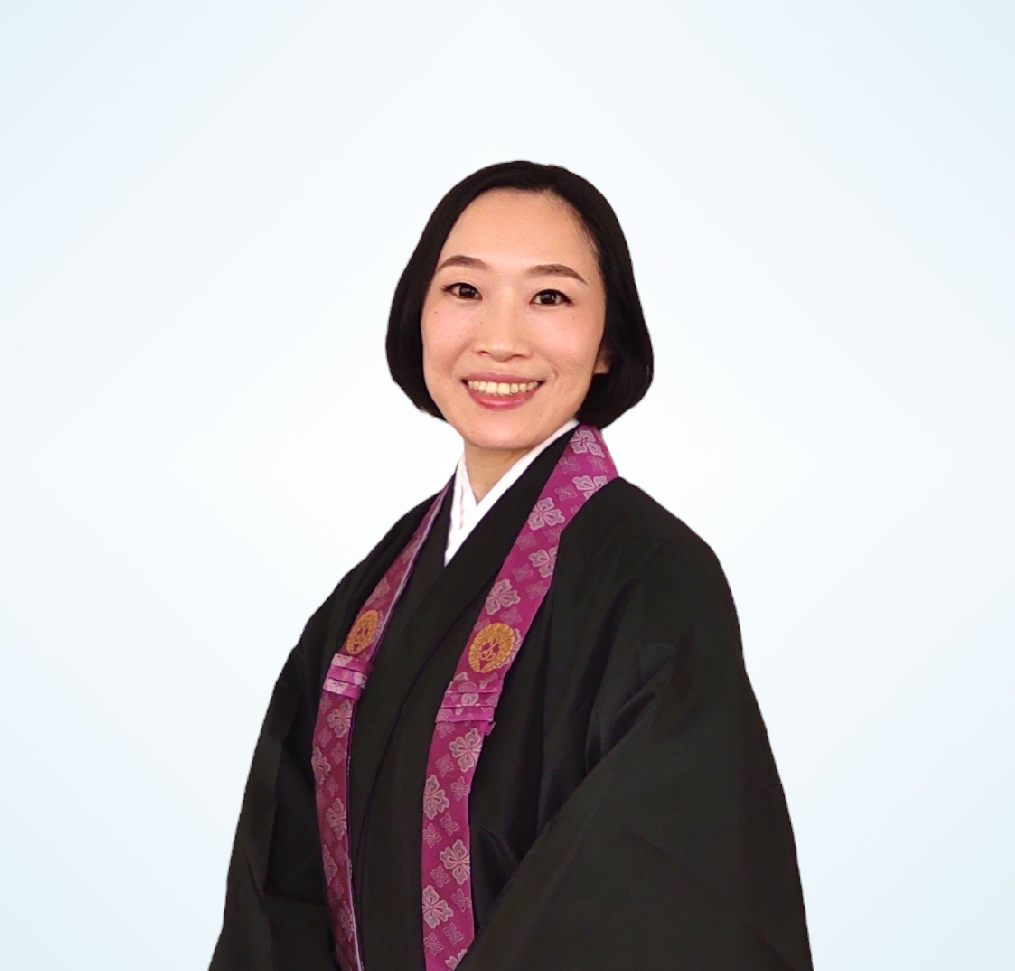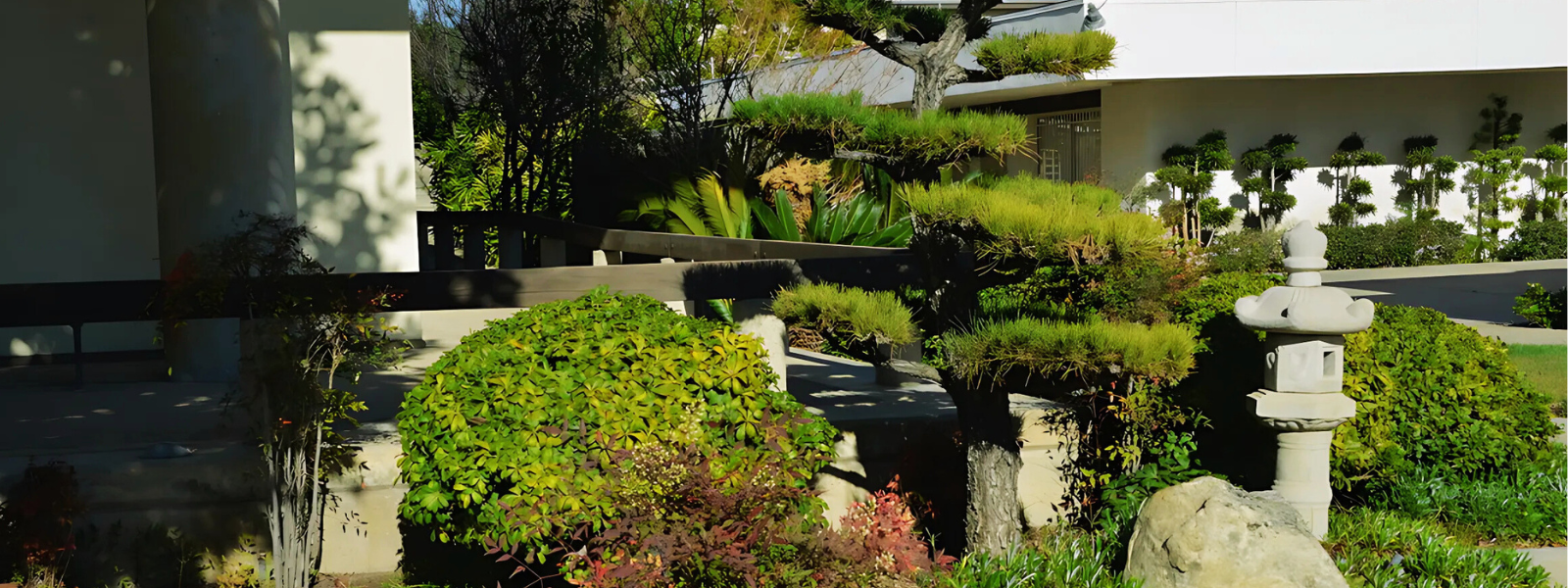Higan: A Time for Reflection and Gratitude in the Light of Amida Buddha

Reverend Yukari Torii
Resident Minister, San Fernando Valley Hongwanji Buddhist Temple
At our temple, we observed the Higan service on September 22nd. “Higan” is a Japanese word, but does everyone know what it means? “Higan” refers to a state of enlightenment. In Sanskrit, it is called “Pāramitā,” and when translated into Chinese, and then further into English, it means “having reached the other shore of enlightenment.”
In Jodo Shinshu, we are taught that this enlightened world is the “Pure Land of Perfect Bliss” (極楽浄土), established by Amida Buddha. Furthermore, the Pure Land and Amida Buddha are manifestations that represent enlightenment in forms that human beings can recognize.
In the most revered sutras of Jodo Shinshu, such as the “Sutra on the Buddha of Immeasurable Life,” Shakyamuni Buddha tells us that the Pure Land is in the west, where the sun sets, giving a specific direction. However, if we were to go straight west, we wouldn’t actually arrive at the Pure Land, because the Earth is round, and we would simply end up back where we started.
So, why did Shakyamuni Buddha describe Amida Buddha’s world as the “Pure Land of Perfect Bliss in the west” (西方極楽浄土)? Many high priests, including the “Seven Masters,” have explained the reason for this since ancient times. One reason might be that pointing to a specific direction allows us to more easily focus our thoughts and imagination. In the sutras, it is said that those born in the Pure Land become Buddhas and, rather than remaining in graves, transcend space and time to continue saving others. However, having objects like a butsudan, a grave, and the Pure Land itself helps us more easily envision the existence of those who have become Buddhas, where they are, and what they do as a part of the workings of enlightenment. The direction “west,” where the Pure Land is said to exist, also holds significance as a place that we can imagine in our heart and mind.
Buddhism is about our journey from the world of delusion and suffering to the realm of enlightenment. This is often expressed in the sutras through metaphors, such as the sun’s movement from east to west, symbolizing the course of life.
Across history and cultures, people have likened the sun’s path to the passage of life—looking to the east, where the sun rises, for the beginning of life, and to the west, where the sun sets, for the end of life. Reflecting on this metaphor, I was reminded of films that use sunsets to represent the end of life. For instance, “The Bucket List” (2007), starring Jack Nicholson and Morgan Freeman, tells the story of two terminally ill men who embark on a road trip to complete their “bucket list.” The sunset scenes in the movie symbolize the nearing end of their lives. “The Straight Story” (1999), directed by David Lynch, is another example. This film follows the true story of an elderly man traveling across states on a lawnmower to reconcile with his estranged brother. The sunsets in this film also reflect the protagonist’s journey toward the end of his life.
However, sunsets haven’t only been viewed as symbols of endings. People have been captivated by their breathtaking beauty and have found mystical meanings in them. In the films I just mentioned, the beauty of the sunsets was also deeply striking. When the sun sets, birds return to their nests. Think about our daily routines. The sun rises in the morning, marking the start of the day. We leave for work or school, and by evening, we return home. I hope that most of you are actually able to make it back home by the evening! The sunset signifies the time to return home, and this has come to be connected with the idea of a spiritual home as well.
Regarding sunsets, there’s a quote by Turkish playwright Mehmet Murat Ildan: “Sunset is a wonderful opportunity for us to appreciate all the great things the sun gives us!” Of course, the sun gives life to plants through its light, but I believe Mehmet was referring to more than just this scientific fact. He was pointing to the many other blessings the sun bestows upon us.
In the Pure Land tradition Shinran Shonin inherited, it has been believed that beyond the beautiful sunset lies the place where all beings return. Our lives, when they end, do not fall into a dark abyss of death, but instead, we are embraced by the warm light of a peaceful homeland—a land of serenity. Through the sunset, people have felt this truth. It is said in the sutras that Amida Buddha established the Pure Land in the west, where the sun sets, so that we could feel this deep sense of comfort and peace with our own eyes and hearts. One of the Buddhist practices described in the sutras involves imagining the Pure Land and the Buddha who resides within it. Shakyamuni Buddha himself encouraged us to first envision the setting sun as a way to visualize the Pure Land, the realm of enlightenment.
The Higan service this year held on September 22 coincided with the autumn equinox. Higan refers to the week that includes the spring and autumn equinoxes, with three days before and three days after the equinox. At the beginning, I explained that the meaning of the word “Higan” itself comes from the Sanskrit word “Pāramitā,” meaning “having reached the other shore of enlightenment.” In particular, during the spring and autumn equinoxes, it is believed that the sun’s trajectory from directly east to directly west makes these times ideal for reflecting on Amida Buddha’s Pure Land in the west. This teaching has been passed down through generations.
There is a temple called Shitennō-ji in Osaka, which is known for its views of the setting sun. The temple was built in the latter half of the 6th century, early in the introduction of Buddhism to Japan. Today, Osaka is Japan’s second-largest city after Tokyo, but of course, in those times, there were no skyscrapers like we see now.

It is said that during the equinoxes, people could view the sunset from the temple as it descends into the sea. This gave rise to the belief that the temple’s west gate is connected to the eastern gate of the Pure Land, and this idea became deeply ingrained in the hearts of the people. This belief is even depicted in literature and theater. Even today, during the equinox, people gather at Shitennō-ji to reflect on the loved ones who became Buddhas in the Pure Land while viewing the setting sun.
Amida Buddha and the Pure Land represent a state of enlightenment beyond human imagination, making them difficult to understand, let alone visualize. However, seeing the grandeur of the setting sun before one’s eyes stirs emotions beyond words, and one cannot help but feel a deep sense of reverence. Even without knowing the concept of the Pure Land, I believe that gazing at such a sunset can bring about a sense of experiencing a vast, peaceful world that embraces all life beyond that sunset. In Japan, where the land is narrow, there are very few places where one can see the sunset over a horizon or the sea. However, here in America, there are more opportunities to witness majestic sunsets, like the one depicted in the film “The Straight Story.”
Mehmet said, “Sunset is a wonderful opportunity for us to appreciate all the great things the sun gives us!” For us as Shinshu followers, this Higan season is a wonderful opportunity to reflect on Amida Buddha’s Pure Land, and Amida Buddha’s compassionate activity, symbolized by the setting sun in the west. I believe that some of you have also been made aware, guided by the loved ones who were born before us into the Pure Land, that Amida Buddha has embraced you as well. As we give appreciation for their guidance, let us also express gratitude for the fact that, through Amida Buddha, we too are walking the path to be born into Amida Buddha’s Pure Land, or Higan—the land of enlightenment, free from the suffering of the world of samsara. Not just during the Higan period, but whenever we see a beautiful sunset, let us reflect on the Pure Land and the loved ones who have been born there. Namo Amida Butsu
Source of photo: https://www.shitennoji.or.jp/event/index.html

